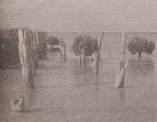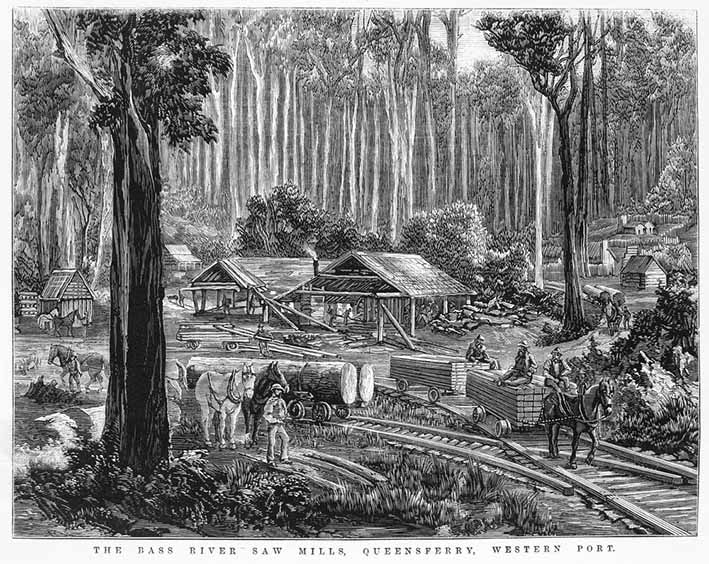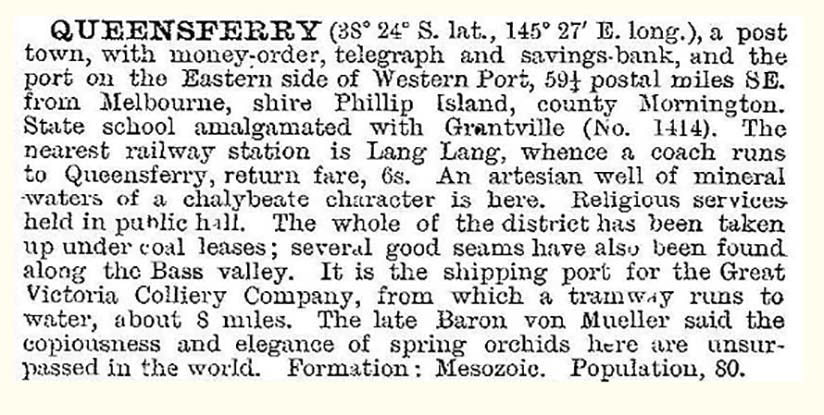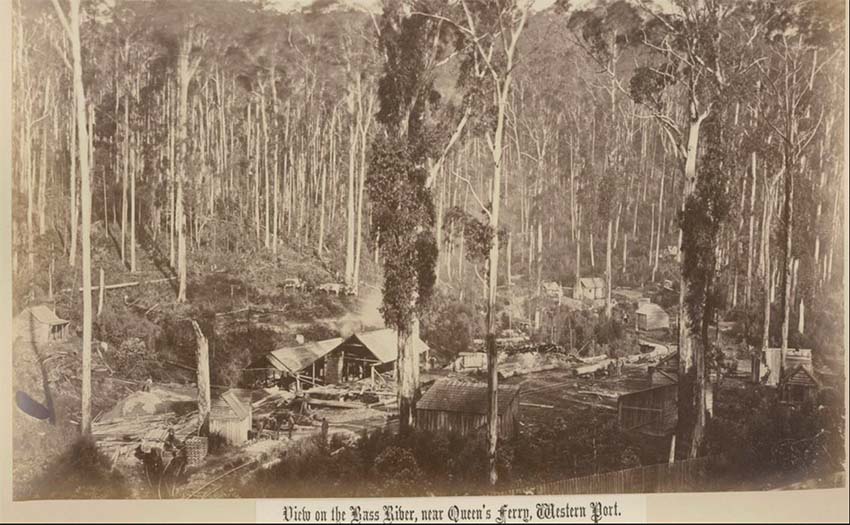 The remains of the Queensferry jetty are a ghostly reminder of a thriving seaside settlement.
The remains of the Queensferry jetty are a ghostly reminder of a thriving seaside settlement. Queensferry is one of the pioneer towns of Victoria that grew, flourished and then disappeared.
It was developed around the jetty which was another shipping port linking Western Gippsland with Melbourne. The road to Melbourne was very difficult and often impassable, particularly in the region of the Koo Wee Rup Swamp. It was cheaper and easier to go by sea. Small ships carried passengers from Queensferry to the western side of Western Port or directly to Melbourne.
On a visit to Queensferry a century ago, you would have found a seaside settlement with hotels, a licensed colonial wine saloon, three public halls, a store and a series of large and small houses. You can still see the remains of hearth stones in the paddocks.
George McGowan lived in a large two-storey residence on the esplanade and held extravagant parties attended by well-known guests from Melbourne. During one party the house caught fire and was destroyed. McGowan lived out his days in a small cottage built on the same site.
The principal cargo leaving Queensferry was timber from the Bass Hills. Much of this was sawn in the mills of Alexander Stewart, who came from Morayshire in Scotland. After various experiences of colonial life in Melbourne and on the goldfields of Ballarat, Stewart reached Queensferry in 1860 with no money, no job, a wife and five children.
Ten years later he had become a mill owner. The bullock teams that used to drag the timber from the hills to the shore found the terrain difficult so Stewart built a wooden tram track which ran from the mill down along Queensferry Jetty Road to the shore. Some earthworks can still be seen beside the road.
Stewart also built a small steamer the Tyro to transport timber. For its first voyage he loaded it at the Queensferry jetty but the boat sat firmly and solidly on the bottom and would not move until the timber was removed and taken to Bass Landing where the Tyro was reloaded.
The mills employed 25 men and 620,000 super feet of timber went out of the area each year. Much of the timber panelling in the early Melbourne buildings came from the Bass Hills.
As the railway line was built in the nearby hills, the little port settlements along the coast ceased to be the centre of commerce and the people moved away.
One woman was rescued by horse and wagon from her perch on the kitchen table.
The flood was not serious but it saturated the land with salt water rendering it useless for several years.
Libby Skidmore’s “A Guide to The History and Beauty of the Bass District” is available from the Bass Valley Historical Society. This essay was first published in “The Waterline News”.


